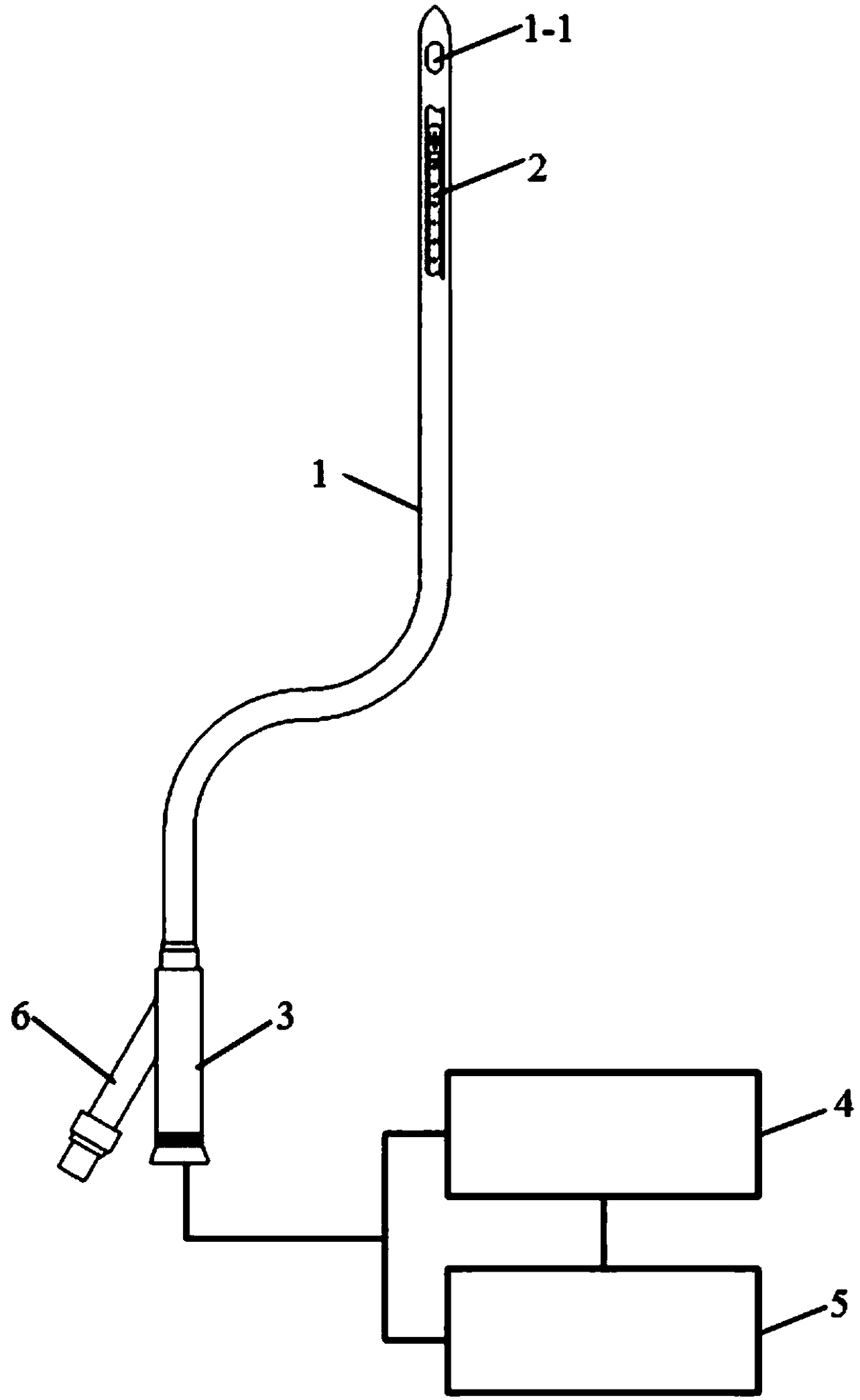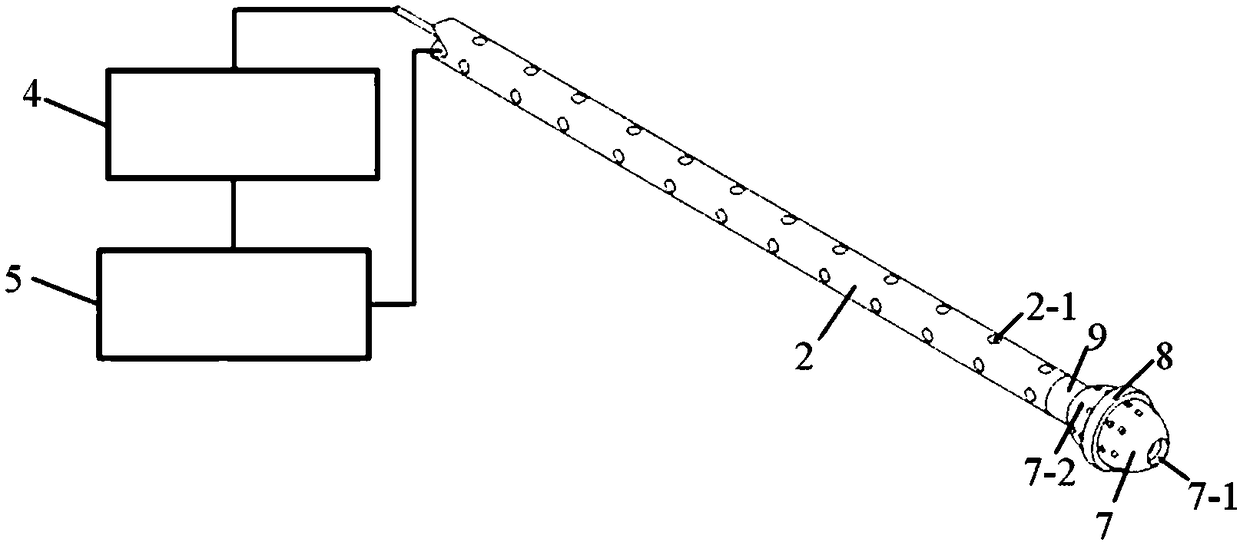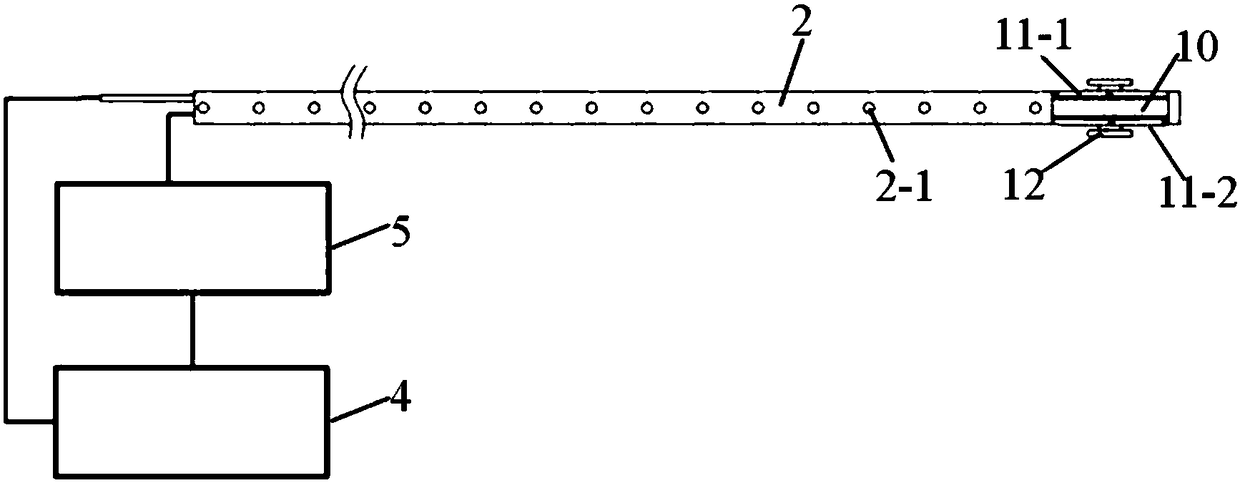Urethral catheterization apparatus for preventing adhesion of bacteria
A urine device and bacteria technology, applied in the field of medical devices, can solve the problems of inability to effectively prevent the biofilm formation of urinary catheters, and achieve the effects of avoiding the adhesion of planktonic bacteria, simple structure, and easy installation
- Summary
- Abstract
- Description
- Claims
- Application Information
AI Technical Summary
Problems solved by technology
Method used
Image
Examples
Embodiment 1
[0029] Such as figure 1 As shown, the embodiment of the present invention provides a urinary catheter for preventing bacteria from adhering. Unit 5 and control unit 4; the top of the urinary catheter 1 is provided with a urine inlet 1-1, and the bottom end communicates with the first manifold 3; the flexible hose 2 is inserted in the urinary catheter 1, and the flexible hose 2 The top end is connected with the fixed unit, the bottom end communicates with the liquid supply unit 5, and the flexible hose 2 is provided with a plurality of first microholes 2-1 along the length direction of the flexible hose 2; the vibration unit is arranged on the fixed unit, and the fixed unit It is used to fix the vibrating unit at the specified position in the urinary catheter 1, that is to say, the fixing unit is used to fix the vibrating unit at the specified position in the urinary catheter 1 and make it close to the urinary catheter 1 The inner wall; the control unit 4 is electrically conne...
Embodiment 2
[0038] Such as image 3 with Figure 4 As shown, the structure and principle of the catheterization device for preventing bacterial adhesion in this embodiment are the same as those in Embodiment 1, and will not be repeated in this embodiment.
[0039] The difference is that the fixed unit in this embodiment includes a telescopic rod 10, a telescopic driver and a pressing member. The lower part of the telescopic rod 10 is slidably inserted into the flexible hose 2, and the upper part is provided with a plurality of resisting parts in the circumferential direction; each A resisting member includes a spacer 11-3, a first connecting rod 11-1 and a second connecting rod 11-2 above the first connecting rod 11-1, and the first end of the first connecting rod 11-1 is connected to the telescopic The rod 10 is slidably and rotatably connected, the second end is rotatably connected to the bottom surface of the pad 11-3, the first end and the second end of the second connecting rod 11-2...
Embodiment 3
[0044] Such as Figure 5 with Image 6 As shown, the structure and principle of the catheterization device for preventing bacterial adhesion in this embodiment are the same as those in Embodiment 1, and will not be repeated in this embodiment.
[0045] The difference is that, in this embodiment, the fixed part includes a lifting drive part, a fixed cover 14 and a fixed bolt 13 connected to the flexible hose 2, the upper movable cover of the fixed bolt 13 is provided with a fixed cover 14, and the vibration unit is sleeved on the fixed The bottom of the bolt 13; the top of the fixed bolt 13 is provided with a plurality of grooves 13-1 in the circumferential direction, the grooves 13-1 are inserted with a positioning pin 13-2, and the top of the positioning pin 13-2 is arranged on the fixed cover On the inner wall of 14, between the bottom end and the groove 13-1, a spring 13-3 is provided for compression; the circumferential direction of the fixed cover 14 is provided with a p...
PUM
 Login to View More
Login to View More Abstract
Description
Claims
Application Information
 Login to View More
Login to View More - R&D
- Intellectual Property
- Life Sciences
- Materials
- Tech Scout
- Unparalleled Data Quality
- Higher Quality Content
- 60% Fewer Hallucinations
Browse by: Latest US Patents, China's latest patents, Technical Efficacy Thesaurus, Application Domain, Technology Topic, Popular Technical Reports.
© 2025 PatSnap. All rights reserved.Legal|Privacy policy|Modern Slavery Act Transparency Statement|Sitemap|About US| Contact US: help@patsnap.com



